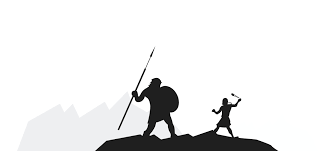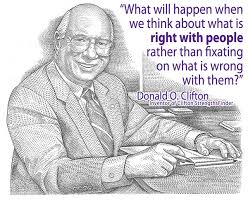
We live in the age of science. We are surrounded and constantly reminded of the role that science plays in our everyday lives. For a great number of people these days science has replaced formal religion as a foundational belief system. ‘Proven by science’ carries a weight that used to be reserved for the works and words of the prophets. As with much of what we believe, in our role as coaches, we tend to overestimate the role that science can serve in guiding our decisions and our behaviour.
Understanding the Scientific Context
Let’s take a look at some common misconceptions of what science is and is not and what science can and can not do. The chart below outlines 4 points relating to what Science Is that are often misconstrued when we think about science and 4 points about what Science Is Not that we often mistakenly attribute to science.
|
Science Is
|
Science Is Not
|
|
A Validation process
|
A Discovery process
|
|
Methodical and highly organised
|
Creative or originating
|
|
Slow and deliberative
|
Leading in thought or innovation
|
|
Reductive
|
Systemic
|
The Role of Science
Science is one of the most valuable tools that we have for validating ideas or concepts (theory). In that role science excels over all other means of determining truth or proof of theory. The nature of the validation process precludes science from discovery however. Except in rare circumstances where an inadvertent scientific result gives rise to a new or modified theory, science, by its nature, only does one of two things, prove that a theory or concept is valid or prove that a theory or concept is invalid.
In order to fulfill its role science must be methodical and organised to the point where no uncontrolled influences can be allowed to impact the data. This leaves no room for creativity other than the creativity involved in insulating the results from unwanted influences. In order to maintain the integrity of science the entirety of the creative process that is the foundation of discovery must remain in the hands and mind of the non-scientist.

Science is a slow process. It can’t be rushed. Validity tests, experiments, must be carefully designed in order to meet the strict requirements of the scientific method. Very few concepts or theories can be absolutely validated and so statistical methods must be employed in order to probabilisticly ‘prove’ or ‘disprove’. Statistical methods require large data sets and multiple trials in order to validate to a reasonable degree of certainty. This is due to the indeterminate nature of the results. The determination comes through large volume and repetition and the repetition takes time.
The fourth important consideration for science is that it is, again by nature, reductive. By reductive we mean that science attempts to isolate and prove a single part of a greater system. In turn, additional parts are validated until the whole system has been covered. This is not an unreasonable way to proceed, it works quite well with mechanical and chemical systems. It does not work as well with complex biological systems where the interaction between system elements is critical to the function of the system. This reductionism is seen by some to be the Achilles Heel of science when it comes to working with complex biological systems. The reason for this point of view is that it is possible for science to ‘prove’ that a system works in one manner when, using other means of observation and interpretation, it can easily be seen that the system, when considered as an entity, works in quite a different manner.
The Role of Thought Leadership
 Thought leadership or innovation, as compared to science, is a very rapid process. It goes through many cycles over a short period to get the idea or innovation to a point where scientific validation is possible and necessary. Science, by its nature, is the end stage of the innovation process. Putting Science in a leading position in the innovation process primarily leads to bad science, premature validation of assumptions or validation of inappropriate assumptions.
Thought leadership or innovation, as compared to science, is a very rapid process. It goes through many cycles over a short period to get the idea or innovation to a point where scientific validation is possible and necessary. Science, by its nature, is the end stage of the innovation process. Putting Science in a leading position in the innovation process primarily leads to bad science, premature validation of assumptions or validation of inappropriate assumptions.
A large proportion of the people who we think of as scientists also fill other roles in addition to their scientist role. A scientist may also be a philosopher, or a theorist, or a designer, or a coach, (traditional thought leader positions) or be involved in some other facet of the creative or thinking areas. This role blending is confusing for everyone. It can also be very misleading when the scientist role is used to bring validity to the other role.
One of the primary tenets of science is absolute objectivity. This objectivity puts the scientist at a very high level on the trust spectrum with respect to conclusions and pronouncements made. When a scientist delivers some significant validation findings a very high level of trust is attained. When this level of trust is tacitly deemed to transfer over to the other work that is done in non-science areas we get into trouble. We confuse ‘done by science’ which is scientific with ‘done by a scientist’ which is not necessarily scientific. When the trust turns out to have been misplaced this is somehow seen to be a problem of science and not a problem of our faulty logic leading to inappropriate perceptions.
Working with Science
If you are relatively successful in your coaching area, science that is done in your area will not be that useful to you. Using the common understanding about science that we have determined above, anything current that science will validate about your area will have been known, established and actively practiced by you for a number of years. The best that science can do in this instance is to confirm the efficacy of what you have been doing for years.
Again, if you are relatively successful in your coaching area and the science that is being done contradicts what you have been doing, there is a strong probability that the science has been done incorrectly, which has resulted in flawed conclusions. A great example of this type of problem can be seen in the case of Tom Longboat.
 Longboat was a native Canadian and one of the most successful North American distance runners of all time. Longboat had a 13 year career that ran from 1905 to the end of the First World War. During that time, the turn of the 20th Century, the prevailing scientific knowledge dictated that lactate threshold was increased by spending maximal time at lactate threshold. The foundation for this belief was that the medical profession had just become aware of, through scientific research, the mechanisms of addiction and the phenomenon of increase in tolerance to an addictive substance. It was assumed, incorrectly, that this same mechanism worked for any substance. The ‘understanding’ was that high exposure to lactate would allow for an athlete to develop a tolerance to lactate in the same manner as addictive substances. In this case science was used to extrapolate results to capture more situations than were warranted by the context of the understanding. This is a highly common mistake that is still made way too frequently today.
Longboat was a native Canadian and one of the most successful North American distance runners of all time. Longboat had a 13 year career that ran from 1905 to the end of the First World War. During that time, the turn of the 20th Century, the prevailing scientific knowledge dictated that lactate threshold was increased by spending maximal time at lactate threshold. The foundation for this belief was that the medical profession had just become aware of, through scientific research, the mechanisms of addiction and the phenomenon of increase in tolerance to an addictive substance. It was assumed, incorrectly, that this same mechanism worked for any substance. The ‘understanding’ was that high exposure to lactate would allow for an athlete to develop a tolerance to lactate in the same manner as addictive substances. In this case science was used to extrapolate results to capture more situations than were warranted by the context of the understanding. This is a highly common mistake that is still made way too frequently today.
Longboat refused to train according to the scientific understanding of the day and, instead, trained according to the dictates of his body. This training entailed a mixture of high intensity effort of short duration, low intensity effort of long duration, and sessions with alternating high and low intensity (intervals) and rest days between the heavy workouts. In fact, this is the scientifically proven foundation of the prescription for training endurance runners today, more than 100 years later.
For his efforts Longboat was branded a ‘lazy Indian’. Eventually this lead to the breakup of his relationship with his coach/agent. After the breakup Longboat went on to post ever faster times including breaking the Boston Marathon record by just under 5 minutes in 1907. His methods remained mostly lost to running until they were ‘discovered’ again in the early 1960’s.
Making Science Work for You
So how can you make science work for you? That isn’t hard. As a coach you work in a fairly well defined and small area of human performance. There are any number of performance improvements that science has proven in other sport and human development areas that have not been picked up by your specific event area that could be productively applied. Look to areas of human development that bear some similarity (it doesn’t need to be a close match) and take a look at what science is doing in those areas. You are sure to find a few undiscovered science nuggets that you can exploit to your advantage and to your rival’s chagrin.






 What Don did was look at the performance of successful people in any field and interview them extensively. This gave Don a mountain of data. He then sifted through the data and came up with a collection of talent areas that he called Strengths. He identified 34 talent areas or Strengths. He sorted these into 4 performance sectors or Domains. He now had an outcome tool. From his interviews he captured the perspectives that identified each of the strengths and from those perspectives he created an assessment tool that he called the StrengthsFinder (now known as CliftonStrengths®).
What Don did was look at the performance of successful people in any field and interview them extensively. This gave Don a mountain of data. He then sifted through the data and came up with a collection of talent areas that he called Strengths. He identified 34 talent areas or Strengths. He sorted these into 4 performance sectors or Domains. He now had an outcome tool. From his interviews he captured the perspectives that identified each of the strengths and from those perspectives he created an assessment tool that he called the StrengthsFinder (now known as CliftonStrengths®).





 work. Chromosomal differences are just one of several differentiators for human gender and only one of several determinates of how an individual will orient themselves with respect to gender. In addition to the genetic XX/XY differences in chromosome makeup there are the obvious physiological genital differences; sexual dimorphism in brain structure and function; endocrine structure and function differences; non-genital physiological differences and a host of functional differences that show up over time. Each one of these differentiators has a range of possible configurations and each configuration can present as male, female or any shade in between the two. The number of possible combinations within the differentiators is greater than the current population of the planet. In effect, possibly the rarest of creatures on the planet would be one that presents as purely female or purely male.
work. Chromosomal differences are just one of several differentiators for human gender and only one of several determinates of how an individual will orient themselves with respect to gender. In addition to the genetic XX/XY differences in chromosome makeup there are the obvious physiological genital differences; sexual dimorphism in brain structure and function; endocrine structure and function differences; non-genital physiological differences and a host of functional differences that show up over time. Each one of these differentiators has a range of possible configurations and each configuration can present as male, female or any shade in between the two. The number of possible combinations within the differentiators is greater than the current population of the planet. In effect, possibly the rarest of creatures on the planet would be one that presents as purely female or purely male. By far the most common response of global sport organisations has been to hold even tighter to the unsupportable binary position. In holding on to an unsupportable position sport has had to resort to some rather bizarre ‘solutions’ to attempt to address the issue. Take the IOC for example. Recently, the IOC has required (suggested) blended gender athletes to undergo ‘corrective’ surgery to remove body parts that offend the binary position. The IAAF has required a special policy, and has had that policy suspended by the CAS, that appeared to be slightly more humane. The IAAF policy requires blended gender athletes to contravene IAAF doping policy by chemically altering their bodies for sport performance purposes to bring them into line with binary gender expectations. This is truly a strange and potentially unethical way to resolve a difficult issue, requiring a person to alter their natural constituent makeup in order to support the discredited theory of gender binarity.
By far the most common response of global sport organisations has been to hold even tighter to the unsupportable binary position. In holding on to an unsupportable position sport has had to resort to some rather bizarre ‘solutions’ to attempt to address the issue. Take the IOC for example. Recently, the IOC has required (suggested) blended gender athletes to undergo ‘corrective’ surgery to remove body parts that offend the binary position. The IAAF has required a special policy, and has had that policy suspended by the CAS, that appeared to be slightly more humane. The IAAF policy requires blended gender athletes to contravene IAAF doping policy by chemically altering their bodies for sport performance purposes to bring them into line with binary gender expectations. This is truly a strange and potentially unethical way to resolve a difficult issue, requiring a person to alter their natural constituent makeup in order to support the discredited theory of gender binarity.
 The process is simple:
The process is simple:




 Thought leadership or innovation, as compared to science, is a very rapid process. It goes through many cycles over a short period to get the idea or innovation to a point where scientific validation is possible and necessary. Science, by its nature, is the end stage of the innovation process. Putting Science in a leading position in the innovation process primarily leads to bad science, premature validation of assumptions or validation of inappropriate assumptions.
Thought leadership or innovation, as compared to science, is a very rapid process. It goes through many cycles over a short period to get the idea or innovation to a point where scientific validation is possible and necessary. Science, by its nature, is the end stage of the innovation process. Putting Science in a leading position in the innovation process primarily leads to bad science, premature validation of assumptions or validation of inappropriate assumptions. Longboat was a native Canadian and one of the most successful North American distance runners of all time. Longboat had a 13 year career that ran from 1905 to the end of the First World War. During that time, the turn of the 20th Century, the prevailing scientific knowledge dictated that lactate threshold was increased by spending maximal time at lactate threshold. The foundation for this belief was that the medical profession had just become aware of, through scientific research, the mechanisms of addiction and the phenomenon of increase in tolerance to an addictive substance. It was assumed, incorrectly, that this same mechanism worked for any substance. The ‘understanding’ was that high exposure to lactate would allow for an athlete to develop a tolerance to lactate in the same manner as addictive substances. In this case science was used to extrapolate results to capture more situations than were warranted by the context of the understanding. This is a highly common mistake that is still made way too frequently today.
Longboat was a native Canadian and one of the most successful North American distance runners of all time. Longboat had a 13 year career that ran from 1905 to the end of the First World War. During that time, the turn of the 20th Century, the prevailing scientific knowledge dictated that lactate threshold was increased by spending maximal time at lactate threshold. The foundation for this belief was that the medical profession had just become aware of, through scientific research, the mechanisms of addiction and the phenomenon of increase in tolerance to an addictive substance. It was assumed, incorrectly, that this same mechanism worked for any substance. The ‘understanding’ was that high exposure to lactate would allow for an athlete to develop a tolerance to lactate in the same manner as addictive substances. In this case science was used to extrapolate results to capture more situations than were warranted by the context of the understanding. This is a highly common mistake that is still made way too frequently today.